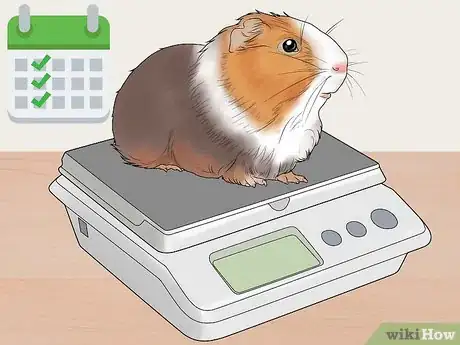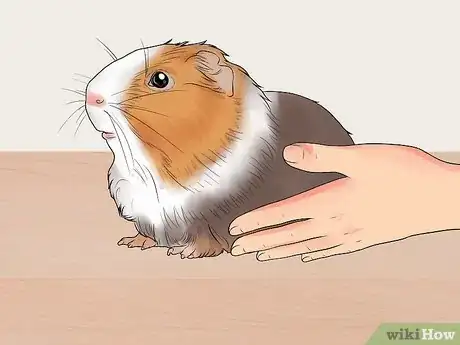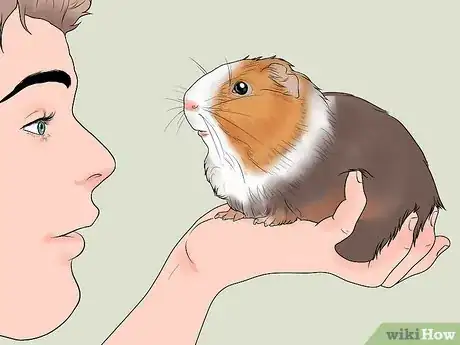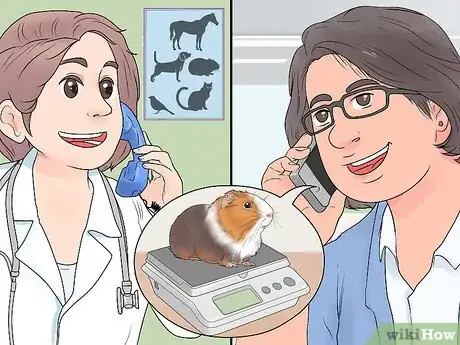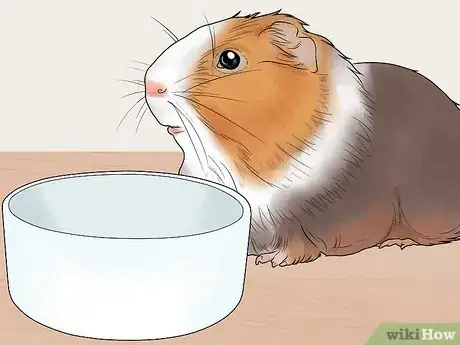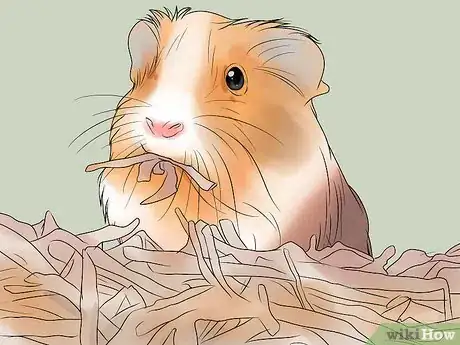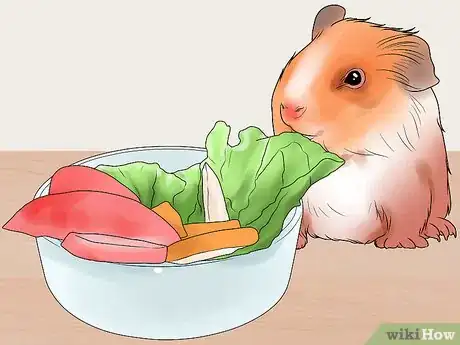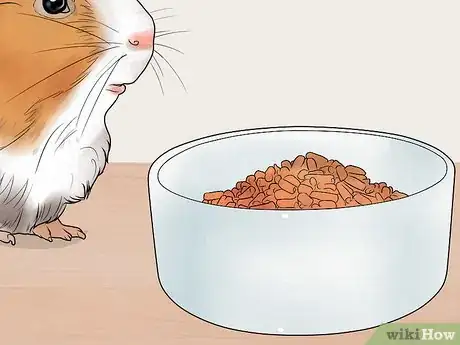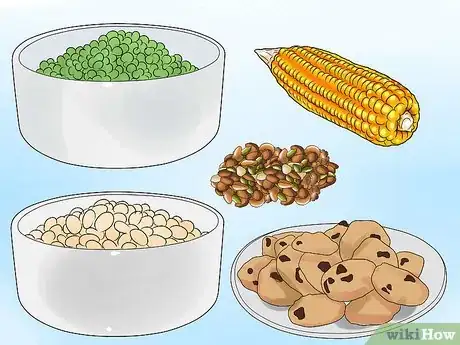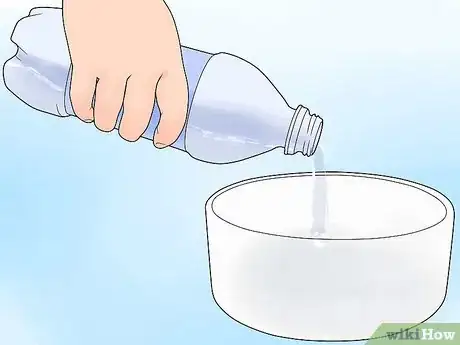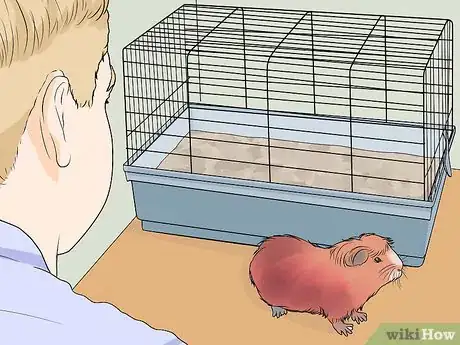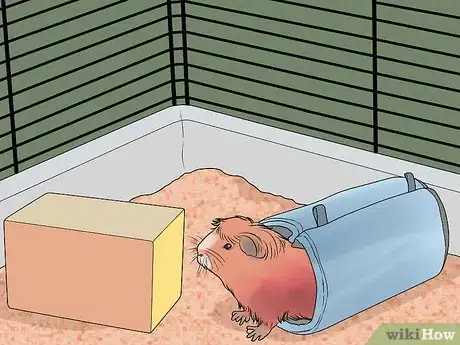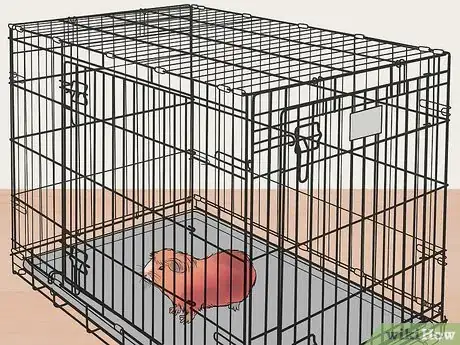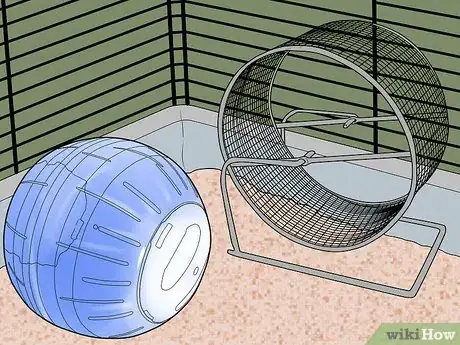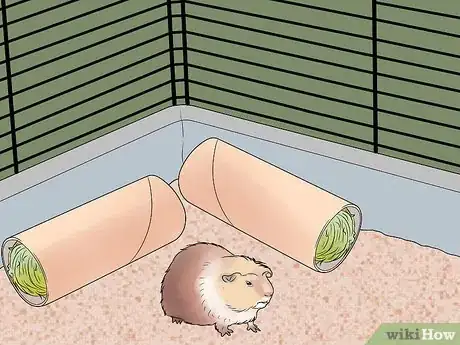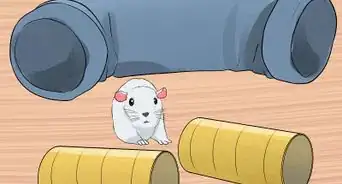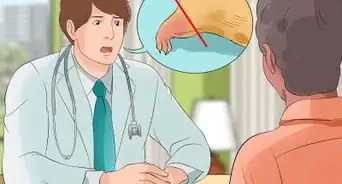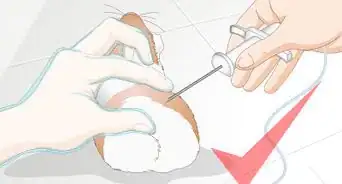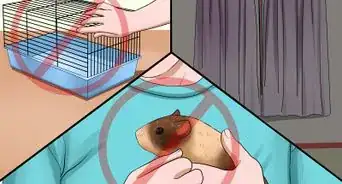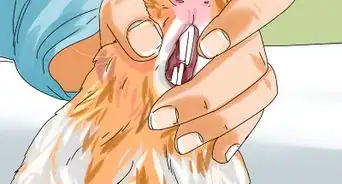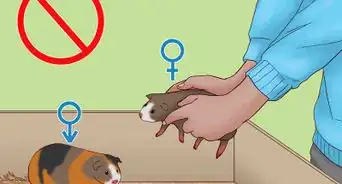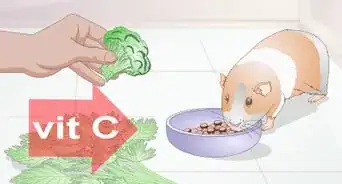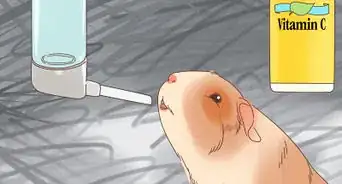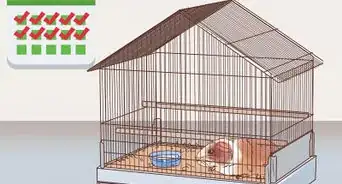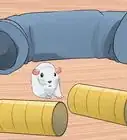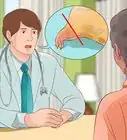This article was co-authored by Pippa Elliott, MRCVS and by wikiHow staff writer, Jessica Gibson. Dr. Elliott, BVMS, MRCVS is a veterinarian with over 30 years of experience in veterinary surgery and companion animal practice. She graduated from the University of Glasgow in 1987 with a degree in veterinary medicine and surgery. She has worked at the same animal clinic in her hometown for over 20 years.
There are 8 references cited in this article, which can be found at the bottom of the page.
This article has been viewed 51,033 times.
Many cavy owners feel like their guinea pig is a little chubbier than normal. If you're concerned about your guinea pig's weight, weigh them regularly and track any weight gain. To help your guinea pig lose a little weight, adjust its diet and cut back on foods such as pellets, treats, and fruit. Encourage your guinea pig to play, move, and become active so it burns more calories.
Steps
Determining if Your Guinea Pig is Overweight
-
1Weigh your guinea pig once a week. Obtain a kitchen scale and gently place your guinea pig on the scale to measure their weight. Keep a written log of your guinea pig's weight so you can track how much they've gained or lost since the last time you weighed them. [1]
- Keep a log of your guinea pig's weight so you can take it to the veterinarian if you want to discuss your pet's health.
Did You Know? An average mature boar weighs about 2 pounds (910 g) and 2.6 pounds (1,200 g) while an average mature sow weighs between 1.5 pounds (680 g) and 2 pounds (910 g). Boars are naturally 20 to 25% bigger than sows.
-
2Feel your guinea pig's ribs. Place your hands on your guinea pig's sides and try to feel their ribs. If your pet is overweight, you won't be able to feel their ribs even if you press gently. You also may have a hard time feeling their spine.[2]
- If your guinea pig is a normal weight, you'll be able to feel their ribs, hips, and spine.
Advertisement -
3Evaluate your guinea pig's shape. Look at your guinea pig from the side and top down. You should be able to see their feet when you're looking at the side. If you're looking from the top down, the chest end of the guinea pig should be narrower than their hind end. If the guinea pig is very overweight, you won't be able to see their feet or a defined body shape.[3]
- Guinea pigs naturally carry more weight than other small rodents. Eating constantly helps their digestion work properly and keeps their growing teeth filed down.
-
4Contact the veterinarian if you notice sudden weight changes. If you've been tracking your guinea pig's weight and see a dramatic weight gain or if you're concerned that your guinea pig is overweight, schedule an appointment with the veterinarian. They'll examine your pet to determine if a medical condition, such as pregnancy or a tumor, is causing the weight gain.[4]
- The vet can also give you specific recommendations about adjusting your guinea pig's diet in order to encourage weight loss.
- If you think you won't be able to see a vet, you can also get a second opinion from many guinea pig owners on an online cavy forum, such as Guinea Pig Lynx.
Adjusting the Guinea Pig's Diet
-
1Avoid starving your guinea pig to help them lose weight. Opt for a gradual, healthier approach instead. Although your goal is to reduce the overall amount that your guinea pig eats, your guinea pig should never go without food for too long. Even going without food for 24 hours can have a negative effect on your guinea pig's health and this may even cause serious health complications for your pet.
-
2Offer an unlimited amount of quality grass hay. 80% of your guinea pig's diet should come from high-quality grass hay. These include timothy grass, orchard grass, or botanical grass. Some guinea pigs prefer a variety, so try giving your guinea pig different types to see what they prefer.[5]
- Since alfalfa is actually a legume that's high in calories and calcium, don't feed it to your overweight guinea pig.
-
3Feed your guinea pig nutritious produce that's high in vitamin C. In order to get a variety of nutrients and vitamin C, give your guinea pig up to 1 cup (128 g) of fresh vegetables a day. If you're looking to drastically cut calories, limit your guinea pigs fruit consumption. Good produce choices include:[6]
- Bell peppers
- Parsley, spinach, or kale
- Broccoli and brussels sprouts
- Cabbage and cauliflower
- Cucumber, baby carrots, or tomatoes.
-
4Limit the amount of pellets you give your guinea pig. Pellets can be a primary cause of weight gain in guinea pigs. Cut back on how much you give your guinea pig and ensure they're getting enough produce that contains vitamin C.[7]
- For example, if you're currently giving your guinea pig 1/4 cup (30 g) of pellets a day, cut the pellets down to 1/8 cup (15 g).
Did You Know? The Humane Society recommends that guinea pigs eat about 1/8 cup (30 g) of pellets a day.
-
5Avoid feeding high-starch foods and commercial treats. Commercial treats and high-starch foods contain too much sugar for your guinea pigs. Instead of feeding these foods or treats, offer them fresh vegetables in moderation. Avoid feeding your guinea pig these high-starch foods:[8]
- Peas
- Beans
- Corn
- Nuts
- Baked goods, such as cake and cookies
- Cereals and grains
-
6Provide unlimited water so your guinea pig stays hydrated. Check your guinea pig's water bottle several times during the day to ensure that there's always fresh water available. Staying hydrated is important since it will prevent dehydration and kidney problems.[9]
- If you don't have a water bottle, put the water into a heavy crock that the guinea pig won't be able to tip over.
Getting Your Guinea Pig to Exercise
-
1Introduce floor-time to encourage your guinea pig to move. Let your guinea pig out of their cage so they can run around a larger space, such as a bathroom or kitchen. To help your guinea pig become comfortable with floor-time, set out treats and a few hiding spaces, such as a paper bags or empty tissue paper boxes, where they can go if they want to feel secure. Try to do floor-time at least a few hours a week.[10]
- Make sure all pets are locked away from the room your guinea pig is having floor-time in and seal off the room by setting up gates or closing the doors so your guinea pig can't get out.
Did You Know? Floor-time encourages your guinea pig to explore, get some exercise, and enjoy mental stimulation.
-
2Add toys and obstacles to the cage to encourage your guinea pig to be active. Toys, such as tunnels or large blocks, will stimulate your guinea pig to play and move around their cage. This will help your guinea pig burn calories and lose weight. Remember to only use toys that are designed for use within a hamster or guinea pig cage. They shouldn't contain toxins or lead-based paints since your guinea pig may chew on them.
- Guinea pigs can become overwhelmed or feel cramped if you put too many toys in their cage. Ensure that your guinea pig still has plenty of room to run even with the toys in their cage.
-
3Give your guinea pig more room to move in their cage. Sometimes obesity has to do with the cage size. If you have a small cage, or one stuffed with too many obstacles, it will limit your guinea pig's exercise space. Get a larger cage so your guinea pig has lots of room to run around and play. This will help them lose weight.[11]
- To encourage your guinea pig to move throughout their large cage, place food, water, and their hidey hole apart from each other so your guinea pig has to move to get to them all.
-
4Avoid putting exercise wheels and balls in the cage. These aren't designed for guinea pigs and can seriously harm their spines, legs, and feet. You should also avoid putting a leash or harness on your guinea pig when you take them out of their cage since these can also damage their spine or neck.[12]
-
5Hide bits of food so your guinea pig has to search for it. Instead of simply putting fresh hay or food in the same part of the cage every day, tuck it into an empty paper towel roll. Then hide the roll in the cage so your guinea pig has to hunt for the food. If you're giving pellets, put them into a hollow ball that you've drilled holes into. The guinea pig will smell the pellets and roll the ball until the pellets fall out.[13]
- You can also hide food in a small cardboard box that your guinea pig will be able to chew on.
References
- ↑ http://www.guineapigcorner.com/weight
- ↑ https://www.pfma.org.uk/_assets/docs/pet-size-o-meter/pet-size-o-meter-guinea-pig.pdf
- ↑ https://www.pfma.org.uk/_assets/docs/pet-size-o-meter/pet-size-o-meter-guinea-pig.pdf
- ↑ http://www.guineapigcorner.com/weight
- ↑ https://cvm.ncsu.edu/wp-content/uploads/2016/12/Caring-for-your-Guinea-Pig.pdf
- ↑ http://www.guinealynx.info/diet_order-c.html
- ↑ https://www.humanesociety.org/resources/guinea-pig-feeding
- ↑ http://www.guinealynx.info/diet.html
- ↑ http://www.guinealynx.info/diet.html
About This Article
To get your guinea pig to lose weight, try cutting back on the amount of pellets you're giving it every day. For example, if you usually give your guinea pig 1/4 cup of pellets, try cutting back to 1/8 cup. Just make sure your guinea pig still has access to an unlimited amount of grass hay, and continue to feed it around 1 cup of fresh vegetables and 1/4 cup of fresh fruit every day so it gets all the nutrients it needs. For more tips from our Veterinary co-author, like how to tell if your guinea pig is overweight, read on!
